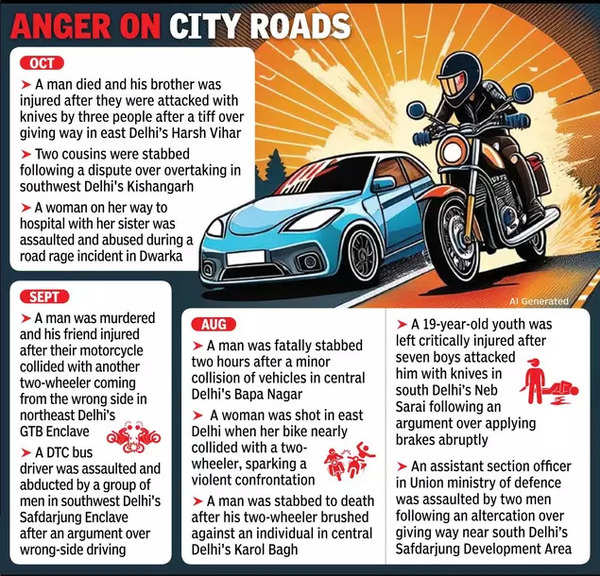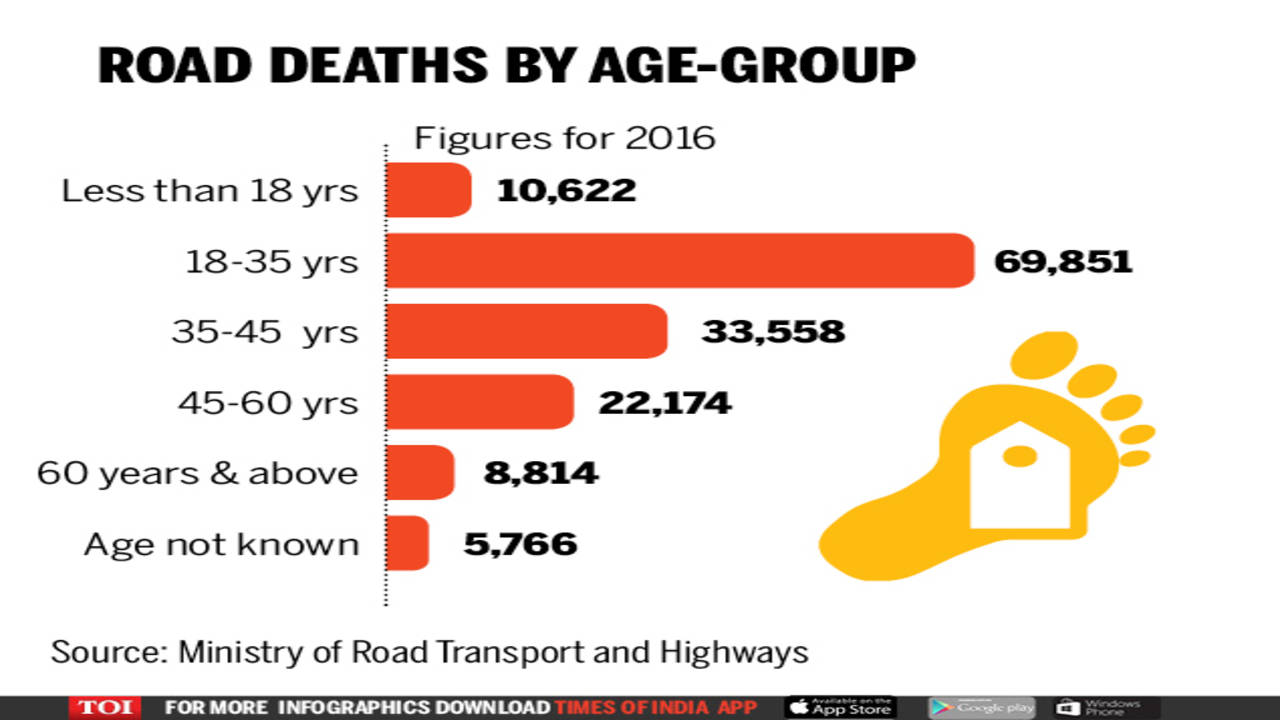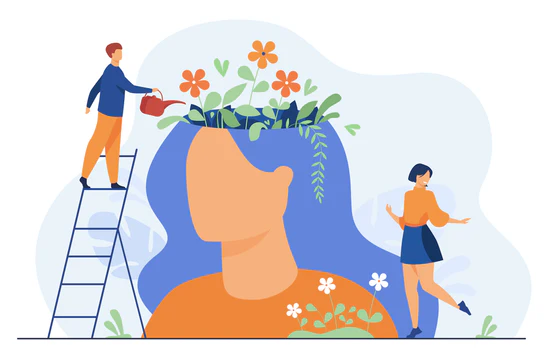Trigger Warning:
This article discusses incidents of violence and aggression that may be distressing to some readers. Reader discretion is advised.
Introduction
Road rage is defined as aggressive or violent behavior displayed by drivers in response to perceived offenses by other motorists (Shinar, 1998). In India, the rapid growth of urbanization, coupled with traffic congestion and stress-related factors, has led to a rise in road rage incidents. Psychological research suggests that road rage is linked to emotional dysregulation, impulsivity, and neurological stress responses (Dula & Geller, 2003).
Read More- Ways to Improve Mental Health
Recent Cases of Road Rage in India
There have been recent rise in road rage cases in India, some that have made popular headline include-

Mumbai Tragedy: A Fatal Attack Over an Overtaking Dispute
In October 2024, a 27-year-old man, Akash Maine, was beaten to death in Mumbai after an argument over overtaking an auto-rickshaw. The altercation escalated when the driver and his associates physically assaulted Maine, resulting in fatal injuries. Nine individuals were arrested (India Today, 2024).
Pune Horror: Motorcyclist Dragged for Three Kilometers by a Car
In December 2024, a shocking road rage incident occurred in Pune, where a motorcyclist was dragged for over three kilometers on the bonnet of an Audi. The conflict arose when the Audi struck the motorcycle, and the driver, instead of stopping, accelerated with the motorcyclist clinging to the car. The driver and two accomplices were arrested (Financial Express, 2024).
Delhi Stabbing: A Cab Driver Killed Over a Traffic Dispute
In December 2023, a cab driver, Manoj Kumar, was stabbed to death in Delhi’s Mehrauli area. The confrontation occurred when three men on a bike demanded passage, but Kumar was unable to give way due to traffic congestion. One of the bike riders stabbed him in the chest before fleeing. One minor was later arrested (India Today, 2023).

Psychological Mechanisms Behind Road Rage
Some psychological mechanisms include-
1. Emotional Dysregulation and Displaced Aggression
Research suggests that road rage is often an expression of displaced anger from personal frustrations (Dula & Geller, 2003). Drivers experiencing chronic stress, financial difficulties, or workplace pressure may displace their frustration onto other motorists. Emotional dysregulation leads to poor impulse control, which exacerbates aggressive behaviors on the road (Deffenbacher et al., 2003).
2. Gender and Societal Expectations
Male drivers, particularly those aged 18-25, are more prone to aggressive driving behaviors due to societal expectations linking masculinity with dominance and risk-taking (Shinar, 1998). A study found that young men who strongly identify with traditional masculinity norms are more likely to engage in road aggression (Stephens et al., 2016).

3. The Neuroscience of Road Rage: The Fight-or-Flight Response
When a driver perceives a threat (such as being cut off in traffic), the amygdala triggers the fight-or-flight response, releasing adrenaline and cortisol (Berkowitz, 1993). This activation increases heart rate and aggression while suppressing rational decision-making in the prefrontal cortex (Denson et al., 2009). As a result, individuals may engage in reckless or violent behaviors without fully processing the consequences.
Psychological Strategies for Reducing Road Rage
Some psychological mechanisms to deal with road rage include-
1. Early Intervention Through Driver Education
Implementing driver training programs that emphasize self-control, emotional intelligence, and deconstructing harmful gender stereotypes can significantly reduce aggressive driving (Le Monde, 2024).
2. Mindfulness and Relaxation Techniques
Mindfulness-based stress reduction (MBSR) helps individuals stay present in the moment and manage anger effectively. Research has shown that individuals who practice mindfulness techniques, such as controlled breathing and meditation, exhibit lower levels of driving aggression (Borders et al., 2010).
3. Driver Education Programs on Emotional Intelligence
Educating drivers on self-awareness, emotional intelligence, and impulse control can help reduce road rage incidents. Training programs that incorporate emotional regulation skills have been found to significantly reduce aggressive driving behaviors (Stephens & Groeger, 2009).
4. The Role of Music in Reducing Aggression
Listening to slow-tempo music while driving has been linked to lower stress levels and reduced aggressive tendencies (van der Zwaag et al., 2013). Research suggests that classical and soft rock music can decrease road rage incidents by up to 60% (News.com.au, 2023).
5. Strengthening Law Enforcement and Public Awareness
Enforcing stricter penalties for aggressive driving and launching public awareness campaigns can serve as deterrents. A study on traffic enforcement in the UK found that visible law enforcement reduced aggressive driving incidents by 30% (Stradling et al., 2008).
Conclusion
Road rage is a complex psychological phenomenon influenced by emotional dysregulation, societal expectations, and neurological responses. To mitigate aggressive driving behaviors, a multi-faceted approach is needed, including cognitive-behavioral interventions, mindfulness techniques, emotional intelligence training, and stricter law enforcement. By fostering a culture of patience and self-regulation, we can reduce the frequency of road rage incidents and create safer roads.
References
Berkowitz, L. (1993). Aggression: Its causes, consequences, and control. McGraw-Hill.
Borders, A., Earleywine, M., & Jajodia, A. (2010). Could mindfulness decrease anger, hostility, and aggression? Aggressive Behavior, 36(1), 28-44. https://doi.org/10.1002/ab.20327
Deffenbacher, J. L., Filetti, L. B., Lynch, R. S., Dahlen, E. R., & Oetting, E. R. (2003). Anger, aggression, risky behavior, and crash-related outcomes in three groups of drivers. Behavior Research and Therapy, 41(3), 333-349. https://doi.org/10.1016/S0005-7967(02)00014-1
Denson, T. F., Pedersen, W. C., & Miller, N. (2009). The neuroanatomy of aggression: Implications for psychological interventions. Psychological Science, 20(10), 1146-1152. https://doi.org/10.1111/j.1467-9280.2009.02416.x
Shinar, D. (1998). Aggressive driving: The contribution of the drivers and the situation. Transportation Research Part F: Traffic Psychology and Behaviour, 1(2), 137-160. https://doi.org/10.1016/S1369-8478(98)00009-6
van der Zwaag, M. D., Dijksterhuis, C., de Waard, D., Mulder, B. L., Westerink, J. H., & Brookhuis, K. A. (2013). The influence of music on mood and performance while driving. Ergonomics, 56(10), 1497-1510. https://doi.org/10.1080/00140139.2013.820844
Subscribe to PsychUniverse
Get the latest updates and insights.
Join 3,022 other subscribers!
Niwlikar, B. A. (2025, March 28). Rise in Road Rage and 4 Psychological Mechanisms Behind It. PsychUniverse. https://psychuniverse.com/rise-in-road-rage/



